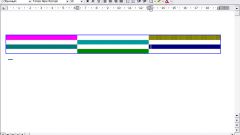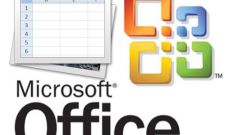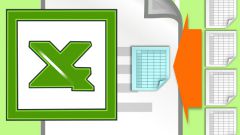Instruction
1
Launch Excel, it immediately creates a new worksheet with the cursor in cell A1. Any cell in which you place the cursor will be deemed selected. Now you specify the commands and functions would apply only to the selected cell.
2
To select a range of cells, set the mouse cursor in the cell which you want to start the selection, click the left mouse button and holding it drag the pointer to the cell where the selection will be completed. Release the mouse button. The selected range will appear in a square frame.
3
This operation can be performed not only by mouse but also by keyboard. Place the cursor in the cell at the beginning of the allocated region, press the Shift key and while holding it, move the sheet using the cursor keys (arrow keys). When you are finished highlighting, release the Shift key.
4
Alternative is Shift and function key F8. Install the mouse cursor in the desired cell and then press to activate selection mode. At the same time in the status bar (the small bar under the workspace) will appear to "Expand the selection". Use the arrow keys to define the desired band, then press F8.
5
For fast cell selection mode to "Expand the selection" using keyboard shortcuts. The combination of Ctrl, Shift, and End allows you to highlight the entire table from beginning to end, and part from the active cell to the beginning of the table is highlighted with Ctrl, Shift and Home.
6
Another option highlight cells using the mouse: position the cursor in the first cell of the range, press the Shift key and while holding it, click with the left mouse button on the cell which is to be completed the selection. Release the Shift key.
7
If you need to simultaneously select multiple noncontiguous cells, press Ctrl, and hold down the mouse specify the cellthat needs to be included in the range.
8
The same can be done by activating the "Add selected fragment". It turns on and off with Shift and F8 and is displayed in the status bar. Highlight the cell in this mode follows your mouse.


















